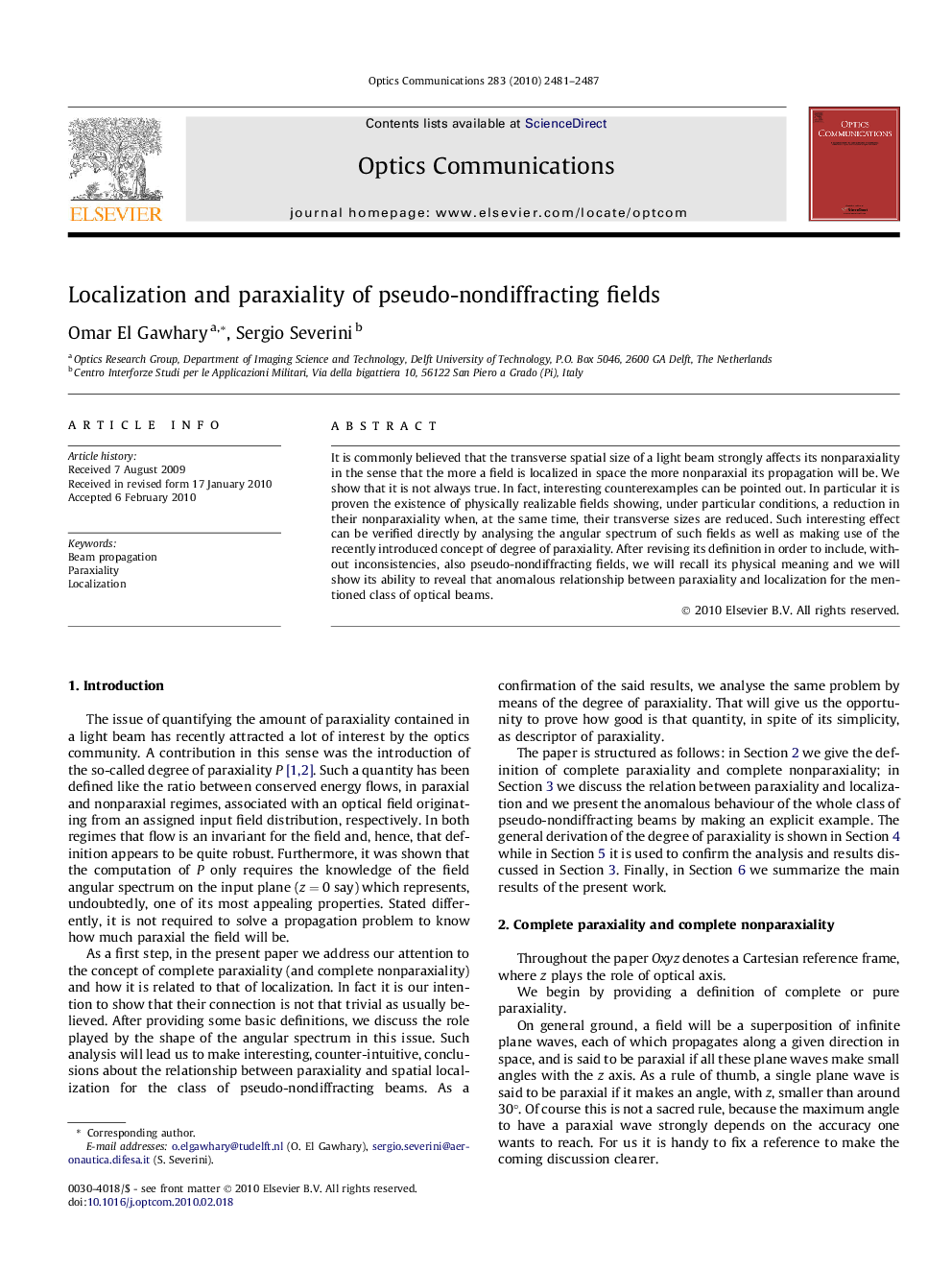| Article ID | Journal | Published Year | Pages | File Type |
|---|---|---|---|---|
| 1539181 | Optics Communications | 2010 | 7 Pages |
It is commonly believed that the transverse spatial size of a light beam strongly affects its nonparaxiality in the sense that the more a field is localized in space the more nonparaxial its propagation will be. We show that it is not always true. In fact, interesting counterexamples can be pointed out. In particular it is proven the existence of physically realizable fields showing, under particular conditions, a reduction in their nonparaxiality when, at the same time, their transverse sizes are reduced. Such interesting effect can be verified directly by analysing the angular spectrum of such fields as well as making use of the recently introduced concept of degree of paraxiality. After revising its definition in order to include, without inconsistencies, also pseudo-nondiffracting fields, we will recall its physical meaning and we will show its ability to reveal that anomalous relationship between paraxiality and localization for the mentioned class of optical beams.
